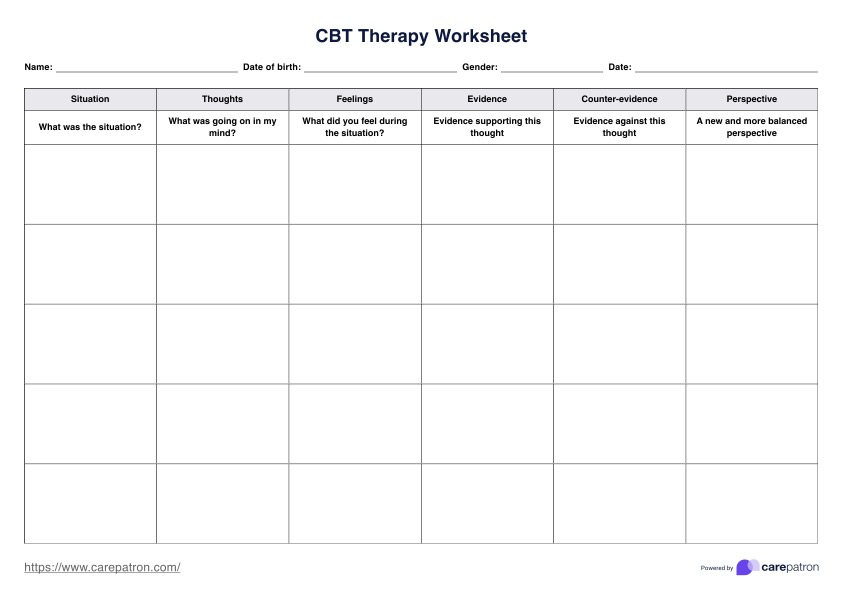A CBT Therapy Worksheet is a structured tool therapists use to help clients identify and challenge unhelpful thoughts, emotions, and behaviors. It guides clients through reflection exercises that connect situations, beliefs, and outcomes, promoting greater self-awareness. These worksheets make cognitive-behavioral techniques easier to apply between therapy sessions, supporting consistent progress.

CBT Therapy Worksheet
Prioritize your client's needs and elevate their psychological well-being with our CBT Therapy Worksheet. Get a free PDF copy today!
CBT Therapy Worksheet Template
Commonly asked questions
The five steps of CBT include identifying troubling situations, becoming aware of thoughts about those situations, recognizing negative or distorted thinking, challenging those thoughts, and replacing them with more balanced ones. Each step helps clients gain control over automatic reactions and emotional patterns. Therapists use these steps to help clients develop practical, sustainable coping strategies.
Examples of CBT activities include thought records, behavioral experiments, exposure tasks, and journaling. These exercises help clients observe how their thoughts influence their emotions and actions in real life. Over time, they learn to replace unhelpful thought patterns with healthier, more adaptive responses.
EHR and practice management software
Get started for free
*No credit card required
Free
$0/usd
Unlimited clients
Telehealth
1GB of storage
Client portal text
Automated billing and online payments











